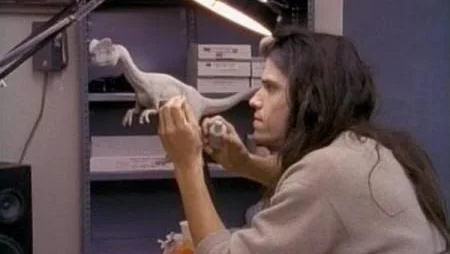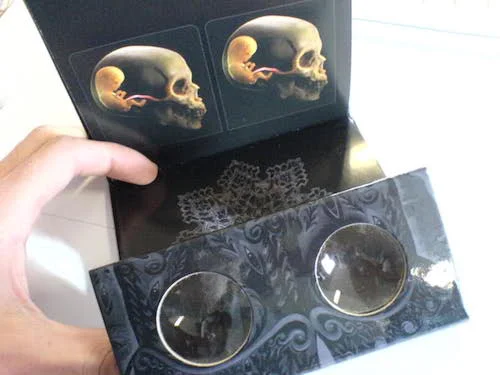Fear Inoculum: Tool's Latest Cinematic Toy
So, progressive hard rock band Tool are finally releasing their long awaited latest album Fear Inoculum in only a few days time. If you don’t know the band, this is just another new musical output. For fans of the band, this has been a thirteen year wait. The band have a history with putting painstaking effort into their album experiences (whether the attempts pay off is up to the listener). Some audiences claim genius, others cry pretentious. Why that matters today, on this film editorial website, is because of the band’s long running tributes to the inner workings of how cinema came to be today.
Their albums are meant to be auditory experiences, but the packaging that their albums come with are some of the consistently strongest in history. Before I get into these individual releases, it’s worth going back even further. One of the main forces behind the band’s visual aesthetic is guitarist Adam Jones. He directs most of the music videos (including stop motion creatures that haunt the earlier tracks). As great as that is, many bands or artists have a huge influence on how their work gets represented in this visual medium. Jones takes things an extra step further, by being a leading innovator with the actual physical packaging that each release comes with. All of this experience comes from his earlier career paths, including being a special effects artist in the movie industry. The greatest example is his work in some of the dinosaur creation in a small low budget film known as Jurassic Park.
With his background, Tool’s physical work have followed a similar cinematic sense of finesse. The first full length album Undertow has an abstract rib cage on the front of the booklet, which encases the bodies on the inner pages when held up to a light (a hidden image is placed inside the inner jewel case tray, behind the opaque black backing). With Aenima, a lenticular front is used to create a 2D illusion, by allowing multiple images broken into a series of lines to appear to be a “moving” picture; the inner booklet has multiple images that can be worked with. Lateralus features the human body sliced into different Damien Hirst-esque anatomical structures, and having each bodily system featured on each page of see through acetate.
The real treat comes with 10’000 Days, whose packaging may surpass the content of the actual music. Two stereoscopic lenses are placed on the top of the package, which unfolds into a viewing display when opened up. The lenses point towards the stuck album booklet, which features two slightly different images paired together on each page. If you look through the glasses, both images merge into one 3-dimensional shot.
Let’s ignore the music for a second. This kind of imagination excites me. We live in the new millennium. We have portable video screens that tell us everything and anything we need to know. The concept of cinematic toys, or portable experiences like this, has been long dead. Forget the earliest iterations like zoetropes. Viewfinders are extinct. Stuff that I grew up on as a kid are nowhere to be found now. Having an album package that mimics the user-input that these older trinkets had is a joy for someone like me. You feel a part of something special, something long forgotten.
That leads us to Fear Inoculum: the album which may have the greatest packaging in contemporary music history. Thirteen years is a long time in between albums. The steps-up that the previous albums had needed to turn into a leap. We couldn’t just have a flip book design. However, I doubt anyone expected what the reality is. The reality is an expansive package set up which unfolds into a portable video player, set with a pause button, volume control, and even a charging cord. You heard that right. This compact disc case plays video. Actual. Video.
From cinematic toy, to actual full motion digital video. Tool have kept up with the shifts and phases of cinema, enough to understand that other artists have been upping their packaging game (especially with the resurgence of vinyl), and to know that digital is what is most consumed nowadays. The portable device plays the entire new album with moving visuals, which you can set upright due to the outer flaps. You can browse through the thirty eight page booklet while this display goes on, or you can focus on the small screen the entire time. Since the album is not officially out yet, there is little information as to what the actual visual display looks like throughout the lengthy album runtime.
Singer Maynard James Keenan suggested that Fear Inoculum is given multiple listens, so that the music can marinate (like a deep, thought provoking film). In many instances, this would sound like a copout by an artist, readying the shield to defend themselves from the backlash of their terrible product. In this case, this sounds like the intended approach. Tool have always aimed for a cinematic approach: from the build ups that explode into devastating climaxes, to the filler tracks that work as downtime in between moments (the empty spaces being turned into art). Their albums even boast film-esque runtimes: usually just shy of an hour and a half. This is clearly audible cinema. Sometimes, they succeed. Sometimes they don’t. Their efforts are always noteworthy, because they know music can be turned back into the sit-down experience they once were, before portable disc players, mp3 devices, or (God forbid) smart phones. Films, while now more portable than ever, are still enjoyed as events. Tool are trying to make the point that music can be as well, and they do so by extracting what makes cinema so engaging. With Fear Inoculum’s crazy design, they have blurred the line between mediums better than ever before.
Andreas Babiolakis has a Masters degree in Film and Photography Preservation and Collections management from Ryerson University, as well as a Bachelors degree in Cinema Studies from York University. His favourite times of year are the Criterion Collection flash sales and the annual Toronto International Film Festival.





